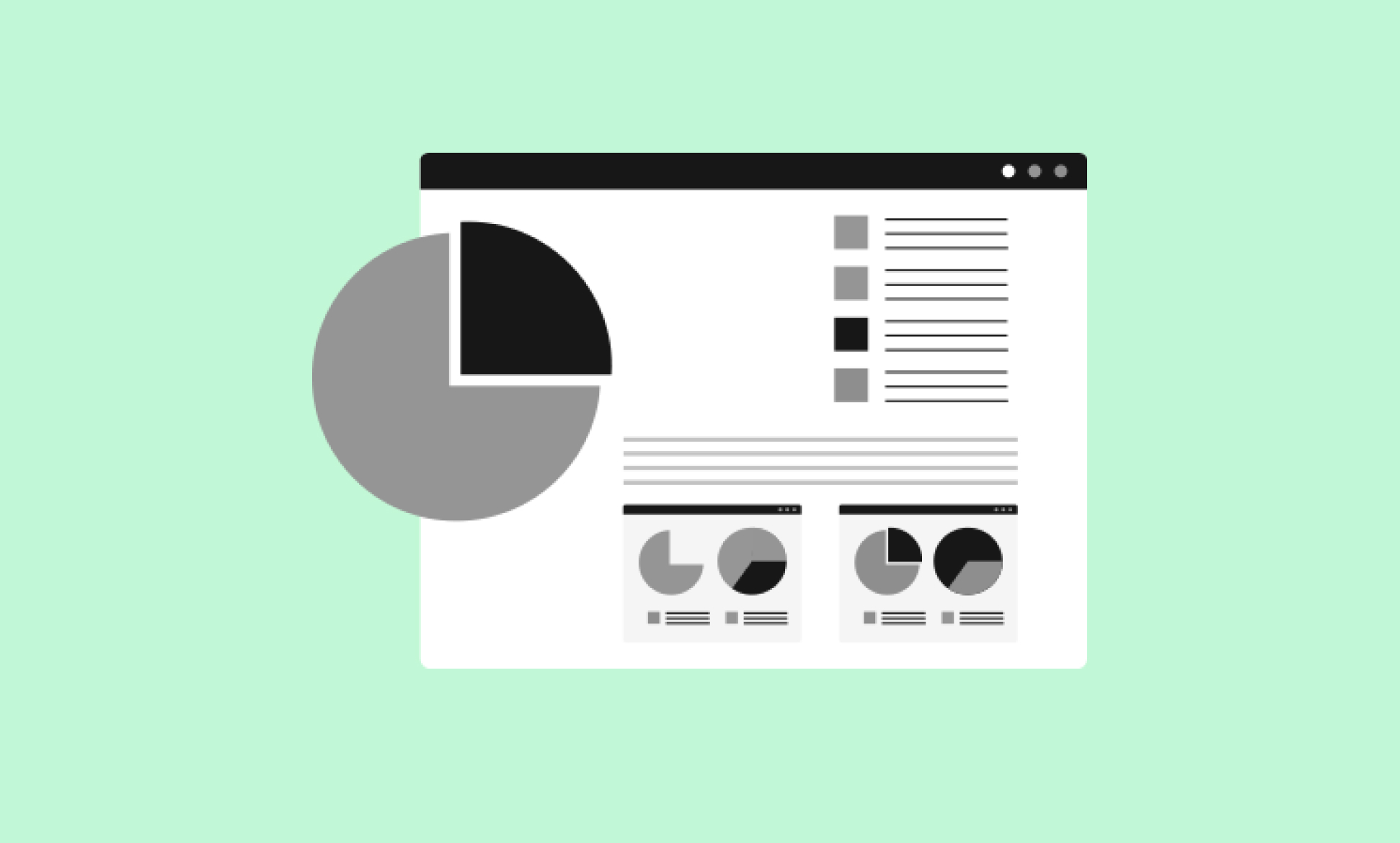Imagine, you log into your podcast hosting platform and see dashboards filled with metrics, numbers, percentages, and graphs.
Your team is asking you to tell them how the podcast is performing- so naturally, you start mirroring the data you see in your account and design it into a beautiful report.
You and your team can’t argue that this report looks great and it’s true that all these numbers do represent your show’s performance. But this data is missing the answer to a crucial question:
What does this data mean?
Too often, we present data but not the story. Without the story, we’re left with the “so what?” question.
“We had 10,000 downloads this month but 6,000 unique listeners.” So what?
“Our episode on FinTech outperformed our episode on MarTech.” So what?
“85% of our audience is located in North America.” So what?
You get the idea.
As a marketer, data storytelling is key when tracking channel performance and podcasts are no exception.
In this blog, we break down the do’s and don'ts of interpreting podcast analytics so that you not only understand your data but can effectively tell its story.
Downloads and unique listeners
Downloads and unique listeners are two of the easiest metrics to understand. Put simply, a unique listener is tracked by a device, so if the same person listens to an episode five times, they count as one listener. A download is the number of people who have downloaded an episode to a device. What a download doesn’t tell you is if they actually listened.
This is where you have an opportunity to put your data into action.
Here’s an example: Your latest episode had 5000 downloads, but only 1000 unique listeners. What that tells you is that you have 5000 people who are likely automatically downloading your show because they are subscribed or following it (subscribing and following are the same thing, different distribution platforms just use different terminology) but only 1000 people are listening.
Now you know that your show does have a significant amount of interest, your promotions, show art and description seem to be working- enough to get people to follow your show. So why aren’t they actually listening?
This is where you can focus your attention on episode topics, titles, and content. Compare your show and format to other shows in your industry- maybe there’s already an established show that uses the same premise, or the niche is saturated by shows that all use the same format.
Once you’ve identified areas of improvement, you can test them. Once a new episode drops that implements something new, see how its performance compares using your data.
Audience Building
Many marketers are familiar with, and experts in, a wide array of marketing channels, but audio is a very different space. Unlike most video-based platforms, it’s very difficult to ‘go viral’ with a podcast. While not impossible, podcasting is largely based in niches and community building.
What this means is that you shouldn’t expect massive numbers right out of the gate. It’s easy to look at your first few episode’s unique listener and download numbers and feel discouraged, after all, the biggest shows in the world rake in millions of listens and downloads right?
In the vast majority of cases, audience building takes time. Remember, some of the biggest shows in podcasting are produced by companies that come with built-in audiences and are established in the podcasting space.
Take the current #1 show on Apple Podcasts, The Coldest Case in Laramie. It’s produced by Serial and the New York Times, organizations with huge built-in audiences who have already established themselves in the space, and hosted by Kim Barker, who is a Pulitzer Prize winning journalist. They all have huge reach and audiences that combined to propel them to the number one spot.
You may be thinking: but my brand is making a fantastic show, and we have followers on our other socials! That may be the case, but there are two important things to keep in mind:
- Just because your brand thinks the show is fantastic does not mean that listeners will. Brands tend to forget one of the cardinal rules of podcasting: just because you want people to listen to a show, doesn't mean they will! Ask yourself: What will your listeners get out of your show, not just what your brand will get out of it.
- Podcasting is a very active form of media consumption. By that, we mean that a listener needs to make an active decision to seek out your show. This is different from media forms like TikTok. Just by opening the app, they can passively consume your brand’s content without explicitly seeking it out. What this means is that you need to work extra hard to reach listeners and give them valuable content. A lot of people who passively follow you on other channels won’t take the active step of seeking your podcast out.
Consumption rate
You need to pay attention to your consumption rate. It can be tempting to look at your downloads and unique listeners and call it a day, especially when those numbers are what you want to see. However, you’re doing yourself, and you show, a huge disservice by doing so.
Consumption rate has an important story to tell about your podcast. It tells you how much of an episode is being listened to, so you can measure what segments perform well, and which ones cause listeners to drop off.
Causes for fluctuations in consumption rates could be attributed to:
- Episode guests
- Formats
- Ad slots
- CTAs
- Episode section
- Topics
Insider Tip: Don’t expect a 100% consumption rate. When your brand first gets into podcasting, it might take an adjustment to get decision-makers on board with the fact that the consumption rate will never reach 100%. Not every single listener is going to listen to an episode all the way through. A good consumption rate is 70% or above, and a great one is 80%. If you set KPIs for consumption rate unrealistically high, you won’t reach them.
Ratings and reviews
Ratings and reviews are a category of analytics most marketers are familiar with. However, they are especially important in podcasting as your rating and the number and frequency of reviews are all important factors for the algorithm that creates the top podcast charts.
This means a few different things, firstly: encourage your listeners to leave ratings and reviews! Secondly: implement suggestions. Ratings and reviews, especially constructive ones, can be really helpful to grow your show. If there are multiple people who are leaving similar reviews and feedback, it's likely something you want to pay attention to.
While it's great to get 5-star reviews, you can’t ignore the ones that point out areas of improvement. It’s up to you to decide what makes sense for your show, but don’t ignore negative or mediocre reviews. Listeners will also appreciate that they are being listened to, and this can help build a sense of community.
Insider Tip: Don’t Completely change your show based on a review. While it’s ok (and encouraged) to make small tweaks based on reviews, don’t completely drop your original concept without good reason. If you’ve prepared properly and know your target audience and niche before launching, don’t pivot away from that because people who aren’t your target don’t like your show.
Also remember that no matter what you do, you’ll get some negative comments that are negative for the sake of it. Using reviews to improve your show means finding the balance between making small changes to improve your content and not getting discouraged by the people who will dislike the show no matter what.
Demographics
Demographics are the key way to track if you’re reaching your target audience and listener personas. That’s why it’s so important to be creating listener personas and understand your niche before your show launches. Your demographic information is only useful if you know who you want to target.
Remember: Don’t ignore your demographics. You might be thinking: of course, I’d never do that! It can be tempting though, especially if your download numbers are through the roof.
If you have the download numbers you want, it’s great that people are obviously enjoying your show, but are you reaching qualified listeners?
Two of the biggest benefits of branded podcasts is that they can showcase brand personality and turn your company into a thought leader in your industry. If people who are listening 1) Don’t care about your company 2) Aren’t in the industry, are you really reaching your targets?
Here’s a quick example: You're a brand that installs electric car charging stations based in Canada and have created a podcast about the benefits of electric cars. You want industry professionals and regulators to listen in so that you can establish yourself as trustworthy, and educate legislators on the many benefits of electric vehicles. You check your downloads and- wow!- 20,000 people a month have downloaded your show. However, when you look at your demographics you notice that 80% of them are under the age of 18 and live in Australia.
It’s great they’re interested, but the chances that your podcast is actually going to reach your goals aren’t great. These listeners likely aren’t industry professionals and don’t live in the country where you want to sway legislators.
Tracking links and other marketing performance data
Tracking links bring most marketers back into familiar territory. Use tracking links to measure what’s driving traffic toward your show, and vice versa. You should be using tracking links to discover how people are finding your show, and which links you’ve included in your shownotes they’re interacting with most. This is a great measure of the effectiveness of any call to actions included in your show or on your other channels.
Insider Tip: Don’t Keep your podcast siloed from your other marketing channels. Your podcast needs to support your other channels. Keep your branding and messaging consistent and include your podcast in any ongoing campaigns. Your podcast is different from your other channels as a long-form medium, but that doesn’t mean it needs to be kept completely separate.
The dos and don'ts of interpreting podcast analytics data
Interpreting podcast data to paint a picture of how your show is performing is one of the key ways to identify areas for growth.
If you don’t understand what your numbers are telling you, or only pay attention to the ones that are positive, you’re missing opportunities to improve your show, reach more qualified listeners and make an impact in your niche.











